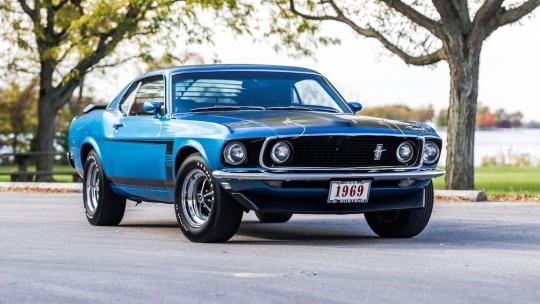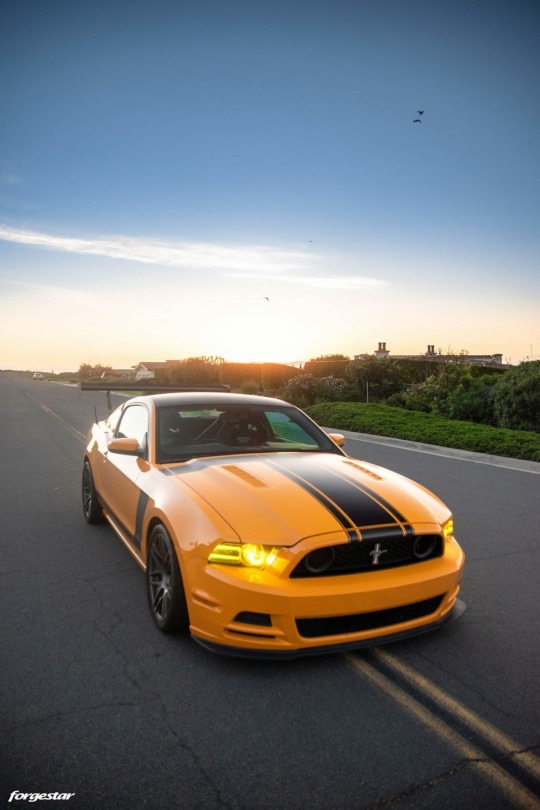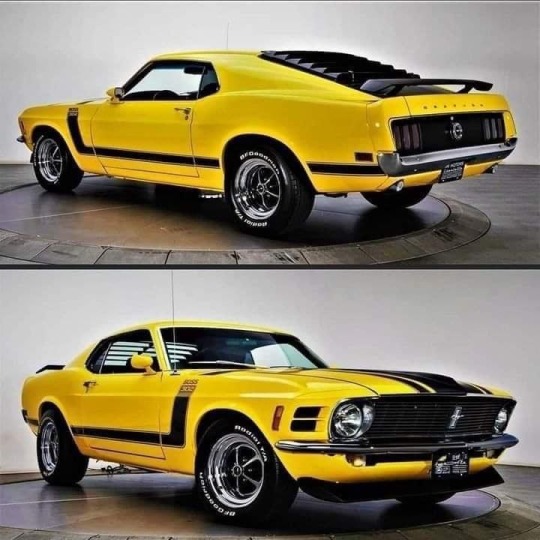#boss 302
Explore tagged Tumblr posts
Text

#mustang#stang#ford#boss 302 mustang#boss#boss 302#racecar#muscle car#muscle cars#musclecar#musclecars#muscle#american muscle#classic#classic car#classic cars#kustomblr#kustom kulture#kustom#custom#car#cars#trans am
1K notes
·
View notes
Text

1969 Ford Mustang Boss 302
This iconic 1969 Ford Mustang Boss 302 is a true muscle car legend. Its aggressive styling, powerful engine, and legendary racing heritage make it one of the most sought-after classic cars of all time.
10 Amazing Facts About the 1969 Ford Mustang Boss 302:
1. Racing Dominance: The Boss 302 was originally designed for racing, and it quickly became a dominant force in SCCA Trans-Am competition.
2. Powerful Engine: Under the hood, the Boss 302 featured a specially tuned 302 cubic inch V8 engine that produced an impressive 290 horsepower.
3. Distinctive Styling: The Boss 302 featured unique exterior styling, including a revised front grille, hood scoop, side stripes, and rear spoiler.
4. Limited Production: Due to its racing heritage, the Boss 302 was only produced in limited numbers, making it a highly collectible car today.
5. Investment Opportunity: Boss 302 Mustangs have a strong track record of appreciating in value, making them a desirable investment for car collectors.
6. Cultural Icon: The Boss 302 has appeared in numerous movies, TV shows, and video games, cementing its status as a cultural icon.
7. Performance Legend: The Boss 302's reputation for performance and handling is legendary. It's a car that delivers an exhilarating driving experience.
8. Nostalgic Charm: The Boss 302 evokes a sense of nostalgia and takes you back to the golden age of muscle cars.
9. Timeless Design: The Boss 302's styling is so timeless that it still looks stunning today. It's a car that will never go out of style.
10. Pure Driving Joy: There's nothing quite like driving a classic muscle car like the 1969 Mustang Boss 302. It's a car that inspires confidence, excitement, and a sense of pure driving joy.
620 notes
·
View notes
Text

1969 Ford Mustang Boss 302
357 notes
·
View notes
Text

Ford Mustang Shelby GT350 Convertible at Carisma Custom's Annual Car Show (2024) in Delafield, WI.
#car show#stance#stanced#ford#mustang#gt#ecobost#v6#shelby#svt#shelby cobra#svt cobra#shelby gt350#shelby gt350r#shelby gt500#shelby gt500kr#gt350#gt350r#gt500#gt500kr#terminator cobra#gt40#focus rs#focus st#fiesta st#saleen#cobra jet#cobra#boss 302#boss 429
39 notes
·
View notes
Photo

302 Boss Ford Mustang.
638 notes
·
View notes
Text

From the car files: a 1970 Ford Mustang Boss 302 ad.
#vintage illustration#vintage advertising#70s cars#muscle cars#pony cars#ford#ford motor company#mustang#ford mustang#1970 ford mustang boss 302#boss 302#1970 mustang
287 notes
·
View notes
Text
Mustang my channel icon!
inspirations: @/s251129 @/TofuPixel :)

7 notes
·
View notes
Text

School Bus Yellow
2013 Boss 302
6 notes
·
View notes
Text

In 1970, Parnelli Jones would drive this Ford Mustang Boss 302 prepared by Bud Moore to win the Trans Am Championship!
Team Penske had beaten out the Ford factory team in the 1968 & 1969 seasons with their Camaros, but just barely. Hoping to break Penske's winning streak, Jones & Moore worked towards faster pit times and began using Goodyear tires for better performance throughout each race.
These strategic changes, along with Penske's switch to the AMC Javelin, allowed Ford to clinch the title and take home the 1970 Trans Am Championship!
#mustang#stang#ford#boss 302 mustang#boss#boss 302#racecar#muscle car#muscle cars#musclecar#musclecars#muscle#american muscle#classic car#classic cars#kustom kulture#kustomblr#kustom#custom#car#cars#parnelli jones#trans am
538 notes
·
View notes
Text

2025 Ford Mustang Boss 302 V8
126 notes
·
View notes
Text

Ford Mustang Boss 302 Trans-am race car
2 notes
·
View notes
Text

1969 Mustang Boss 302
14 notes
·
View notes
Text

Ford Mustang Shelby GT500 at Carisma Custom's Annual Car Show (2024) in Delafield, WI.
#car show#stance#stanced#ford#mustang#gt#ecoboost#v6#shelby#shelby cobra#svt cobra#shelby gt350#shelby gt350r#shelby gt500#shelby gt500kr#gt350#gt350r#gt500#gt500kr#terminator cobra#gt40#focus rs#focus st#fiesta st#saleen#cobra jet#cobra#boss 302#boss 429
14 notes
·
View notes


